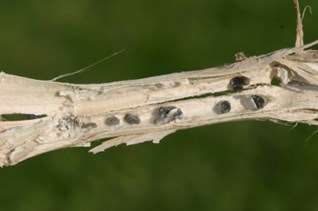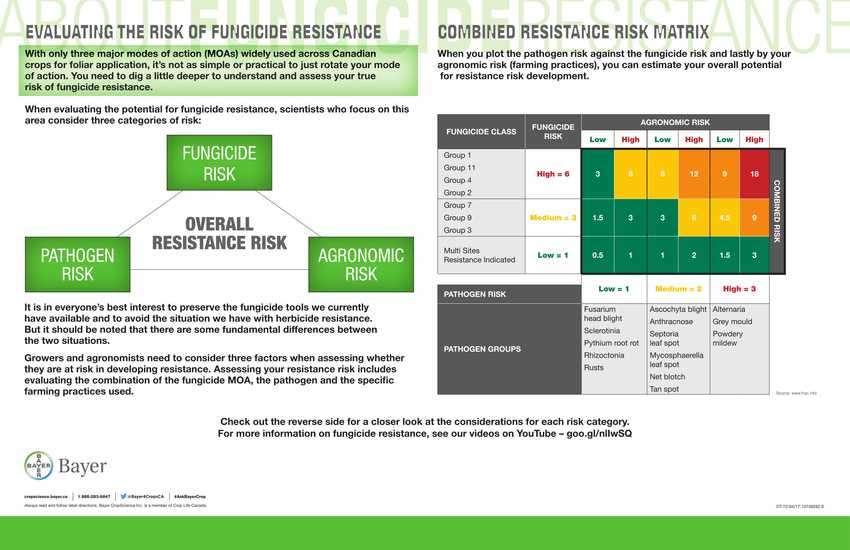Some growers have lost key tools in the fight against weeds and pathogens
By Diego Flammini
Assistant Editor, North American Content
Farms.com
It’s important for farmers to understand the differences between fungicide and herbicide resistance, according to Jared Veness, field marketing manager with Bayer.
“If there’s a weed growing in the field and it sets (a) seed, there’s a very good chance it’s going to be in the same field next year,” Veness told Farms.com. “From a pathogen perspective, there has to be a host.
“If you’re growing canola and you get sclerotinia in the field, and the next year you’re growing wheat on that same field, should you be concerned about using the same mode of action (the way the fungicide targets the pathogen) you did the previous year? Probably not, because the sclerotinia can’t infect that cereal host.”

Sclerotinia in canola.
Photo: Canola Council of Canada
When faced with fungicide decisions, growers should take a step back and consider whether a pathogen from a past crop can present itself in a new crop, Veness suggested.
There are three items to consider when it comes to pathogen resistance, according to Veness. And each item has its own list of elements to consider.
The first item is the pathogen itself.
- Does it one or multiple disease cycles per year?
- Does it have high spore production?
- It is soil or wind-dispersed?
- Can it infect all growth stages of the crop?
- Does the pathogen have a sexual stage? (If asexual, there is a lower risk.)
- What’s the relative fitness after mutation?
- Does it overwinter?
The second item to consider is the fungicide.
- Is the fungicide a single target site?
- Does a single gene control resistance?
- Does it have high and persistent activity?
The third element to think about is the agronomy.
- Does the climate favour disease?
- How many fungicide applications per year? How many applications are targeted on the same pathogen?
- What rates are used?
- Are resistant cultivars available?
- Is there irrigation potential?
- What sanitary measures (i.e. tillage) are being taken?
- What fertilization considerations are there?
The Fungicide Resistance Action Committee also has tips for producers to consider when it comes to fungicide resistance.

